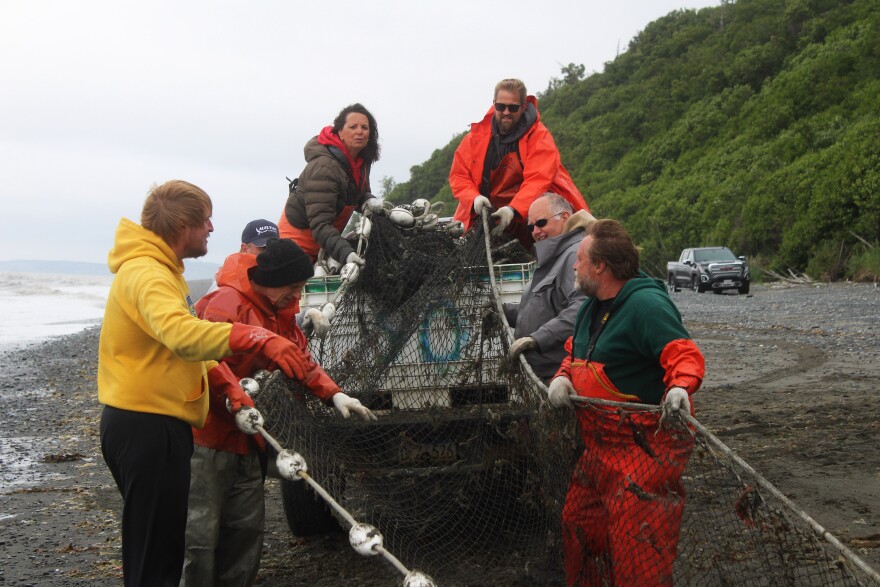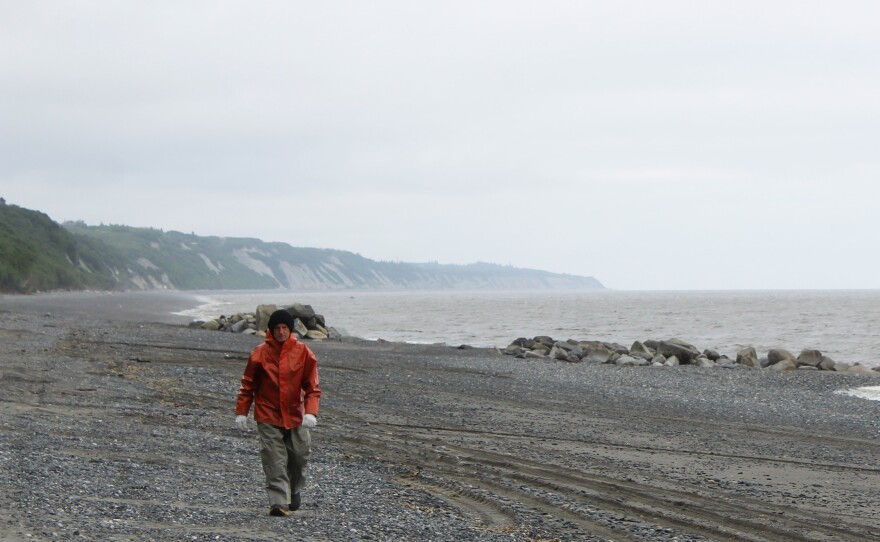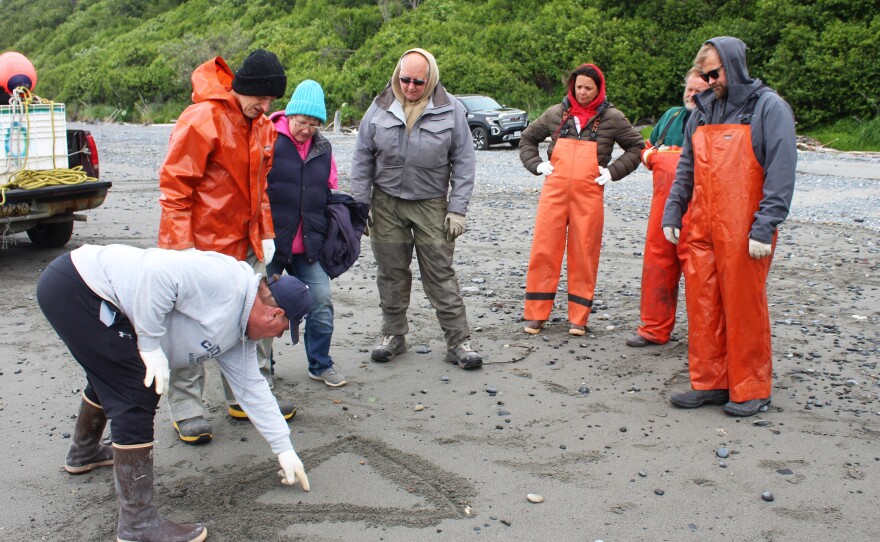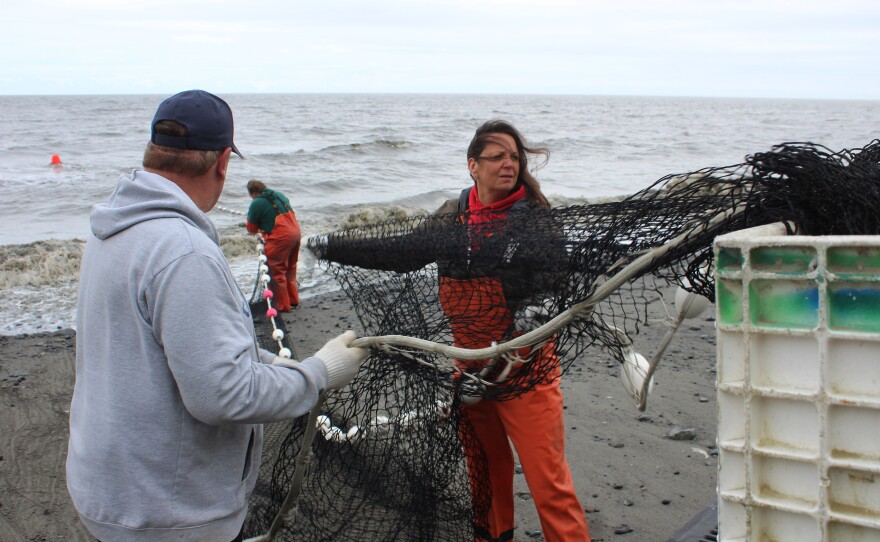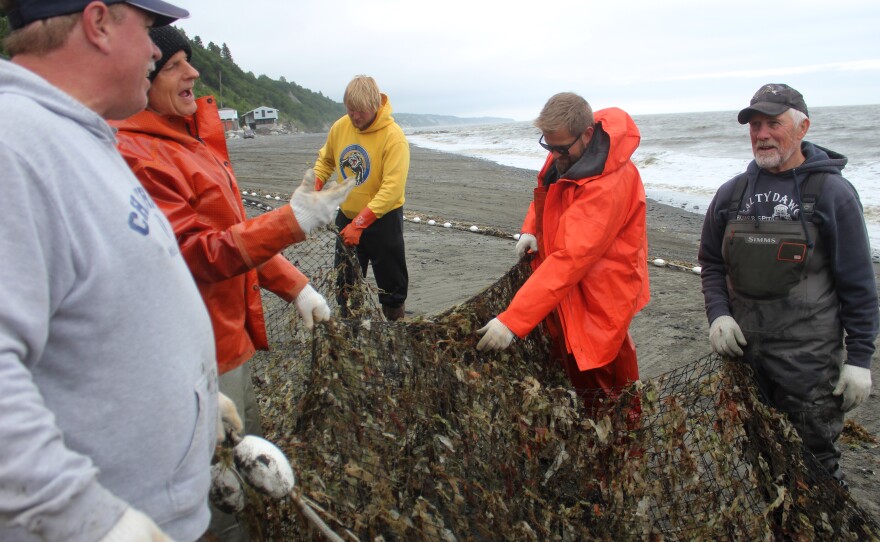For the second year in a row, permit holders in Cook Inlet’s east side setnet salmon fishery are experimenting with new equipment they hope will get them back in the water after years of consecutive closures. The system isn’t totally honed yet, but people are giving it a try.
It’s a cloudy day on the beach in Clam Gulch. Brent Johnson kneels in the sand while a wall of emerald trees sways in the wind above him. He’s splicing two ropes together while his wife, Judy, thinks out loud.
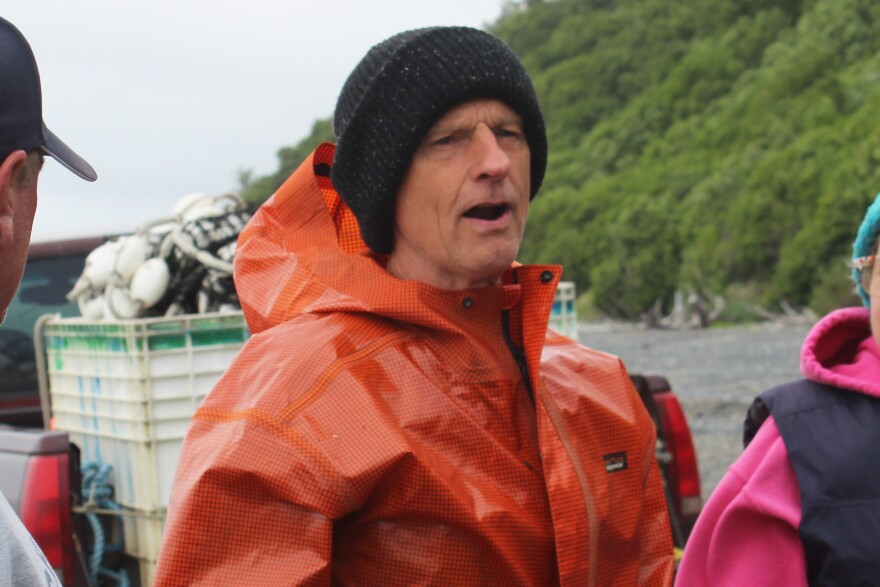
“It doesn’t make sense in my head,” Judy said. “It’s not regular setnetting.”
The couple has been setnetting for decades, so they’d know. And she’s right – it isn’t regular settnetting. It’s beach seining.
The Johnsons are permit holders in Cook Inlet’s east side setnet fishery. But over the last five years, the federal government has formally considered the fishery an economic disaster.
Setnetters like the Johnsons target sockeye salmon. But chinook sometimes end up in their nets. And that's a problem -- declining chinook salmon runs in the Kenai and Kasilof rivers have prompted state fishery managers to crack down on commercial fishing in the area. That means the setnet fishery is sometimes closed altogether, including this year.
That’s what spurred another pair of setnetters, Brian and Lisa Gabriel, to get what’s called an experimental permit from the Alaska Department of Fish and Game to try beach seine gear instead. It’s the Gabriels’ second summer using the new method. Last year, they brought their seines to multiple beach sites to try the gear out in different environments.

But when they pitched the new equipment as a potential fishery gear type to the state board of fisheries back in January, members said they wanted more data.
“We went to the department and asked, you know, our area manager, you know, what was important for data,” Brian Gabriel said. “And they said, ‘Well, we'd like to see it expanded to other beaches. Because we fished on North K-Beach last year, tested on North K-Beach, and we also tested on Salamatof Beach.”
Deploying the Gabriels’ experimental beach seines requires an anchored pulley system on the beach and in Cook Inlet. A tractor and truck onshore pull the net in and out of the water, where it billows with the tide and scoops fish up.
Set nets catch when fish swim into them and get their gills caught on the mesh diamonds. With seine nets, those diamonds are smaller, so fish can be scooped to shore while they're still alive.
Back on the beach, the Johnsons give the new system a try.
But on the group’s first test run, the network of ropes slows to a stop. They’ve hit a snag – literally, according to Lisa.

“When he pulled, he pulled the knot into that pulley out there, and then it and it hung up,” she said. “And so now it's stuck. And so to get that one back in, he's gonna have to break it from here.”
To get the net unstuck, they plan to break the anchoring rope. But then Brian and Brent start yelling.
“We’re going?” Brent Johnson says.
“We’re going!” Brian Gabriel replies.
The ropes start to move again. The net comes unsnagged.
The relief among the beach crew is enough for Carey Johnson, Brent and Judy’s son, to suggest they try again.
“I feel like we gotta give it one real go!” he shouts. “We had to work the kinks out.”
Crews clad in orange Grundéns haul the net in, checking the webbing for fish before taking it out of the water.
Last year, the Gabriels could harvest any sockeye they caught while testing beach seines. But this year, they’re prohibited from selling any of their catch.
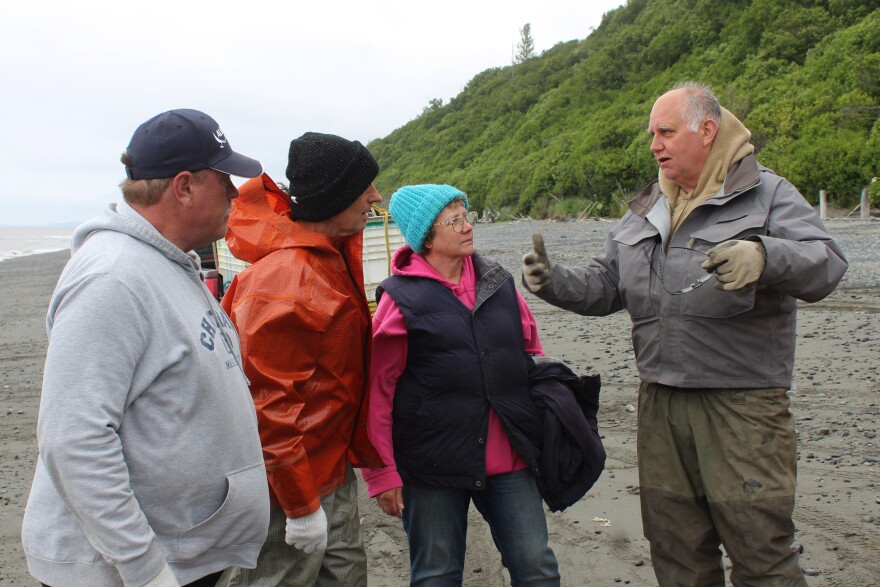
The only thing crews caught at the Johnsons’ fish site was seaweed. Lots of seaweed. Brent Johnson says he could see himself seining commercially if it becomes an option, and chalked poor fishing up to the blustery conditions.
“What I'm thinking is that this was a bad day to try it, and who knows?” he says. “You know, it's hard to line everybody up to get it to go.”
Crouching down after the test runs, Brian draws diagrams in the sand while talking through how they could improve the system. But after a few hours on the beach, Brian and Lisa say the operation was successful in the ways that matter.
“The whole idea was to say, okay, mechanically, does this work,” he said. “I think it does.”
The Gabriels hope to continue testing beach seines on beaches up and down the fishery’s coast. The Board of Fish is next scheduled to take up Upper Cook Inlet fishery issues next year in Anchorage.


